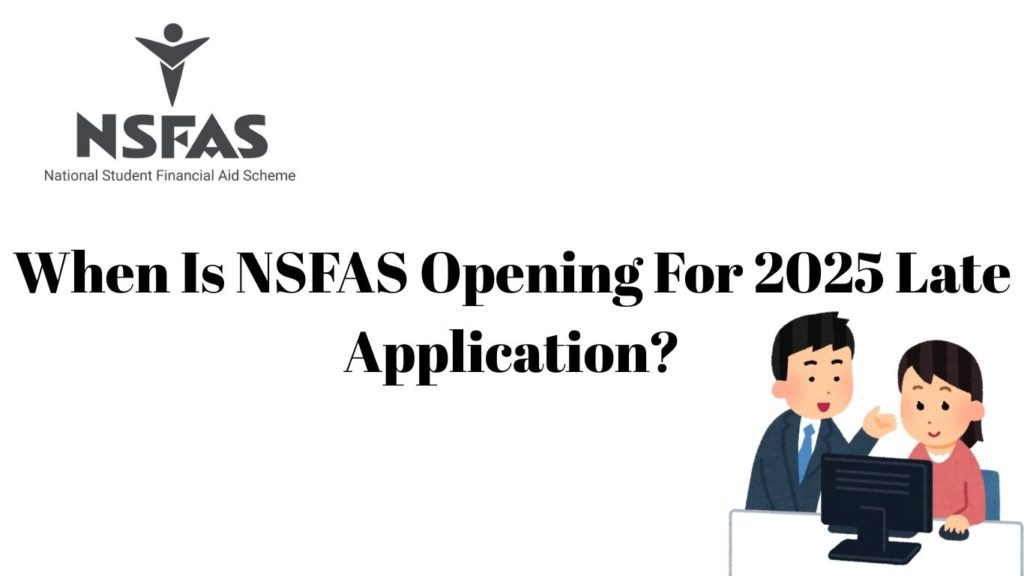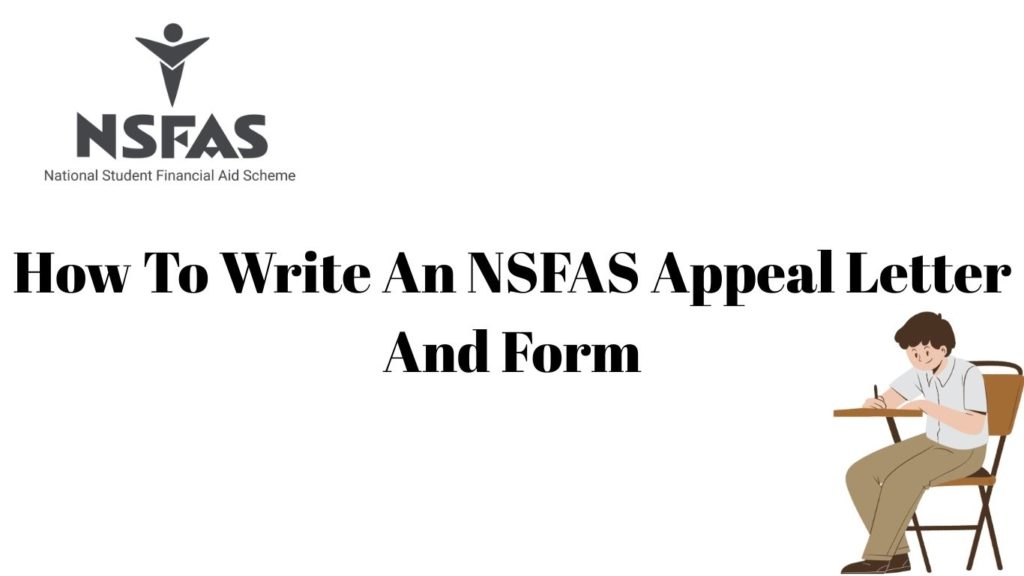How To Reapply For NSFAS After A Year Gap – If you were unsuccessful in obtaining NSFAS funding in previous academic years and wish to reapply, you will need to reapply for NSFAS when the application window opens. You will need to apply during the normal NSFAS application period, which typically opens to new and returning students. To apply, you must visit the NSFAS website and register on the myNSFAS portal to complete your application.
Before applying, you must make sure you are qualified and meet the criteria. Provide all supporting documents and ensure you have no missing or incorrect documents. Don’t apply if you already have funding, and make sure you are a citizen or have a permanent residence. Even though you can still write an application if your application is denied, for a student reapplying, having everything in place and order will be of great help to avoid being denied again.
READ ALSO: How Long Does NSFAS Take To Receive Registration Data From The Institution?
Ensure early submission because if you apply after the deadline, your application will be denied automatically. What this article seeks to achieve is to let readers in on the application process after a gap year and also to ascertain if it is even possible to reapply after a gap year. Continue reading to find out more.
How To Reapply For NSFAS After A Gap Year?
Any student who wishes to be on the NSFAS to enjoy the benefits that come with it will want to reapply after a gap year. Reapplying is no different from applying for the first time. All you have to do is go through a calculated process, and you will be done in no time.
To reapply for NSFAS after a gap year, you will need to submit a new application during the normal application window period, just like you would if you were a first applicant.
You will need to log into your NSFAS portal, which is the official way to apply and also manage your application.
Below is a breakdown of the steps:
Confirm your eligibility: You must still meet the NSFAS standard, which is being a South African Citizen, from a qualifying household (usually, an income of about R350,000 a year), and not have already obtained a qualification at your current level. Also, ensure that your gap year hasn’t disqualified your type of study.
Wait for the reapplication window: The Application window usually opens early each year. You will get an email alert or an SMS update if you previously applied. If unsure, check the NSFAS website or contact them directly.
Log in to your myNSFAS account: Use your previous credentials to log back into your portal. If you have forgotten them or your account was deactivated, you can use the “Forgot Password” link or contact NSFAS support to reactivate your account, or you can still create a new account.
READ ALSO: When Will I Receive My First NSFAS Allowance?
Complete the application again: Even as you are a returning applicant, you must reapply each year. You will have to submit updated personal and academic details and upload any CPFs, ID, OR proof of income again or grant dependency. If you had a break in your studies, prepare documentation explaining your gap year as needed.
Submit or Resubmit Your Application: When the application portal is opened, complete the form in full and upload all necessary documents and review them carefully before submission. You will receive a confirmation number. Save it for any follow-up.
Check Your Application Status: Monitor your NSFAS dashboard. Be prepared to respond to additional documentation requests. After verification, NSFAS will provide an additional documentation request. After verification, NSFAS will provide an outcome. Your status will then show us funded, refused or pending due to missing documents or information.
What Are The NSFAS Requirements For Returning Students?
Usually, the NSFAS has specific requirements for returning students to continue receiving funding.
Below are what you need to know if you are reapplying or continuing after a gap year:
Eligibility and Re-application: You have to reapply each academic year if you want to continue funding, unless you remain in the same program and institution and meet all the academic standards, then your funding will be automatically renewed.
Reapplication is usually required if you change between a TVET college and a university(or vice versa). When you deregister or drop out mid-year and wish to resume later, you will have to reapply.
READ ALSO: Does NSFAS Cover Postgraduate Studies?
Financial Criteria: Applicant’s household income must be R350,000 a year before deductions. The threshold increases to R600,000 a year for people with disability.
Required Documents: Applicant must provide required documents such as a certified copy of your South African ID or a birth certificate, a valid personal email address and a cell phone number and also a signed disability annexure if applicable.
Academic Performance Criteria: Universities(returning students): Returning students in universities must pass a minimum of 60% of registered modules in the previous year to maintain funding.
TVET Colleges:
NC(V) levels: must pass at least 5 subjects.
Report 191 levels: must pass at least 3 subjects.
- The N+ Rule:
- Applies to funding duration: you can be funded for N(nominal course)+1 additional academic year.
- For students with disabilities, funding may extend to N+2.
How Much Must You Earn To Qualify For NSFAS?
NSFAS has requirements that every applicant must meet, one way or the other. If you are a student applying, your family’s household annual income factor.
For a student to qualify for the NSFAS funding, the combined household income must not exceed R350,000 per year before deductions. For a loan, the combined household income can be between R350,001 and R600,000 per year before deductions. Below are more details;
- Bursary: If your household income is R350,000 or less, you are qualified for a bursary.
- Loan: You can qualify for a loan under the Missing Middle Loan Scheme if your household income is between R350,000 and R600,000.
- Disability: A person with disability, your household income can be up to R600,000 per year to qualify for the funding.
READ ALSO: How To Write An Unemployed Affidavit For NSFAS
Also, you must be a South African citizen or must be a permanent resident and be accepted into a public or TVET college or university and be studying for an undergraduate or postgraduate qualification.
Can NSFAS Fund Me For The Second Time?
The NSFAS can fund you a second time, but it depends on your specific situation, and it also comes with terms and conditions. Below is a breakdown
1. You can be funded again if you changed institutions or courses, but you are still within the N+ rule.
2. If you failed or dropped out before but you now meet the academic requirements and are still within the funding time limits, you can receive funding again.
3. Also, you can receive funding if you are applying for a different qualification at the same or another level, and NSFAS considers it part of your original study plan.
Conclusion
To conclude on reapplication after a gap year, I will say that the NSFAS has been very considerate and thoughtful by allowing students and applicants to reapply after a gap year. In this case, students can spend the year gap to travel, work, volunteer, or even give birth and still reapply for the funding after that. In other cases, it can also be the death of a relative or even illness.
FAQs
Can You Reapply If You Take A Gap Year?
Yes, you can still reapply if you take a gap year. Many students usually choose to take a gap year after high school or during college and reapply to universities and other programs afterwards. Here is how it works
If you are taking a gap year after high school:
You can reapply as a first-year applicant unless you have enrolled full-time in another college. Also, some students postpone an existing admission offer and start the next year. Others also turn down their offer and reapply to the same or different schools during their gap year with updated applications.
Travelling, working, volunteering, taking courses and pursuing interests is a very good way to spend your gap year and can also strengthen your application.
How Do I Delete My NSFAS Account And Start A New One?
Here is how to delete your NSFAS Account and start a new one:
- Cancel your existing application and account.
- Log in to your account at myNSFAS
- Go to Track Application
- Click Cancel Application to withdraw your current application and commence account deletion
Sometimes, cancelling online is not always enough. NSFAS typically requires a written request or email to fully delete your profile.
- Email info@nsfas.org.za requesting account deletion.
- Or you can either deliver a written letter in person to an NSFAS office.
2. Reapply with a Fresh Profile.
After your old account is cancelled,
- Visit the official NSFAS website.
- Click on myNSFAS account and select Register.
- Complete all your details, which include your ID, email, phone, password, etc.
- Upload required documents like ID, Proofs, consent, etc.
- Confirm via OTP sent to your phone or email, and submit your new application.


